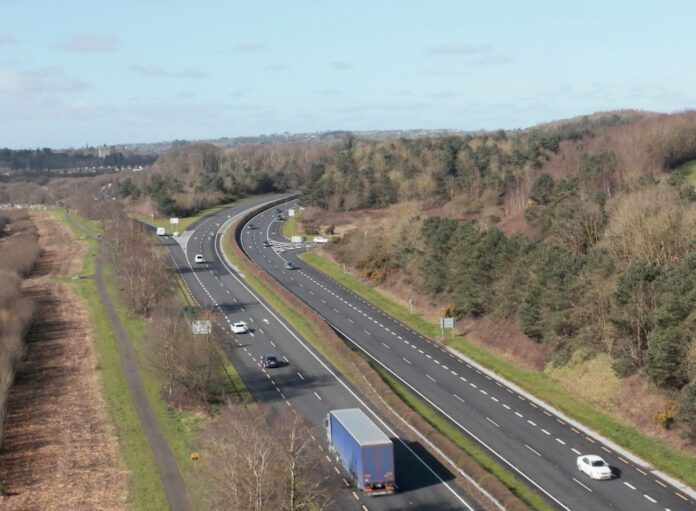
THE new Cork-Limerick N/M20 motorway will make for a complete facelift of “one of the most dangerous roads in the country”, said Mayor of Limerick John Moran, making it “five times safer” than the existing single carriageway road.
Not only that, the transformation is hoped to cut transport between Limerick and Cork by 40 minutes for cars, 45 minutes for busses, and 50 minutes for heavy goods vehicles.
A planning application for the €1.2billion N/M20 Cork to Limerick Project is programmed to be submitted to An Bord Pleanála next year, subject to approval of the project’s business case which will be presented to government later this year.
These significant project milestones were disclosed in the latest project update this Monday, providing new information on the project’s layout and functioning, and indicating for the first time the extent of the lands that will be required for the major new road.
If planning is granted, the new motorway will be constructed in phases, including the construction of long-awaited bypasses of Charleville, Buttevant, and Mallow initially.
Dependent on the approval and planning process, construction of the project could begin in 2028.
It is estimated that the project will take approximately seven years to fully complete, meaning the vital motorway may not be finished until 2035.
Interactive mapping of the new motorway is available on corklimerick.ie, and contains information on the development boundaries, mainline, junctions and side road design, as well as layouts for seven transport hubs and a dedicated freight hub.
Public display events will be held in Charleville (June 17), Adare (June 18), and Mallow (June 19th) between 12pm and 8pm .
Developers have said that the evolving design of the project and its mitigation measures have been shaped by ongoing engagement with local property owners and others adjacent to the new motorway’s route.
They further added that the project team has had over 1,000 face-to-face and online meetings outlining the designs and the mitigating measures proposed for the road.
Mayor of Limerick John Moran welcomed the latest update on the motorway, deeming it “a key infrastructural priority in the National Development Plan”.
“In my recent submission of Limerick ‘asks’ to government, I requested that funding be allocated to the project to ensure that it progresses as quickly as possible. When delivered and built, it will replace one of the most dangerous roads in the country with new transit links that will be five times safer than the existing single carriageway.”
“It will also provide much needed connectivity to our neighbours in Cork, which will provide a significant economic boost to both cities and counties.”
The road, it is understood, will also provide safer, shorter, and more reliable journey times between Blarney and Patrickswell, reduced by 40 minutes for cars and light goods vehicles travelling at 120 km/h, 45 minutes for buses (100km/h), and 50 minutes for HGVs (90 km/h).
The road will also include one of Ireland’s largest active travel network – spanning 100 kilometres of cycle and walkways – connecting Blarney, Rathduff, Mourneabbey, Mallow, New Twopothouse, Buttevant, Charleville, Banogue, Croom, and Patrickswell.
Seven transport hubs along the route at Rathduff, Mourneabbey, Mallow, Buttevant, Charleville, Bruree, and Croom will provide charging points for electric vehicles, along with encourage car sharing, active travel, and public transport.
A freight hub at Mallow will facilitate secure parking and rest areas for HGV drivers and provide charging points to encourage the transition towards zero emission HGVs and buses.

